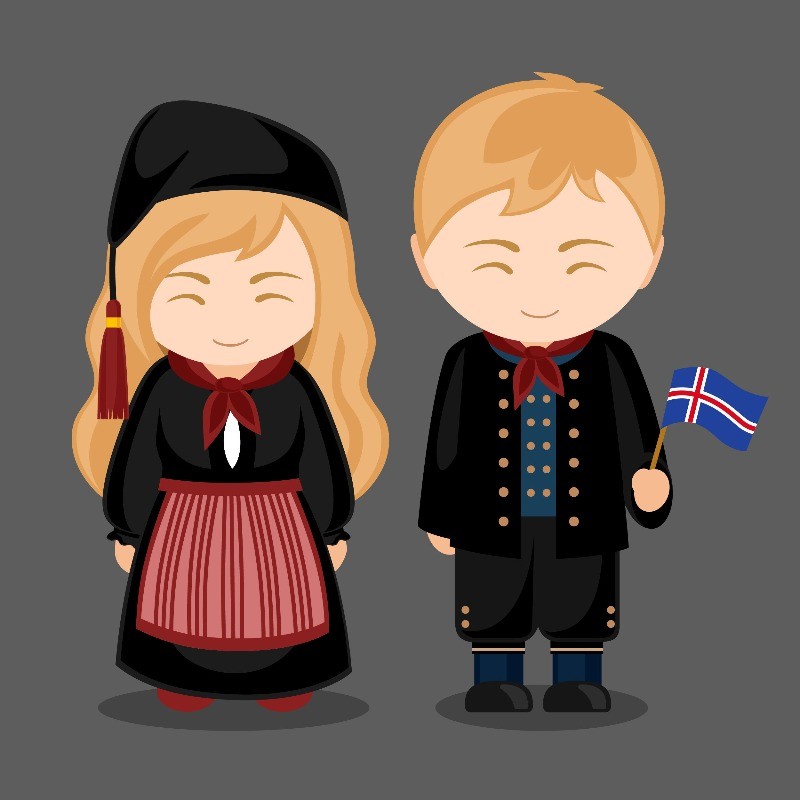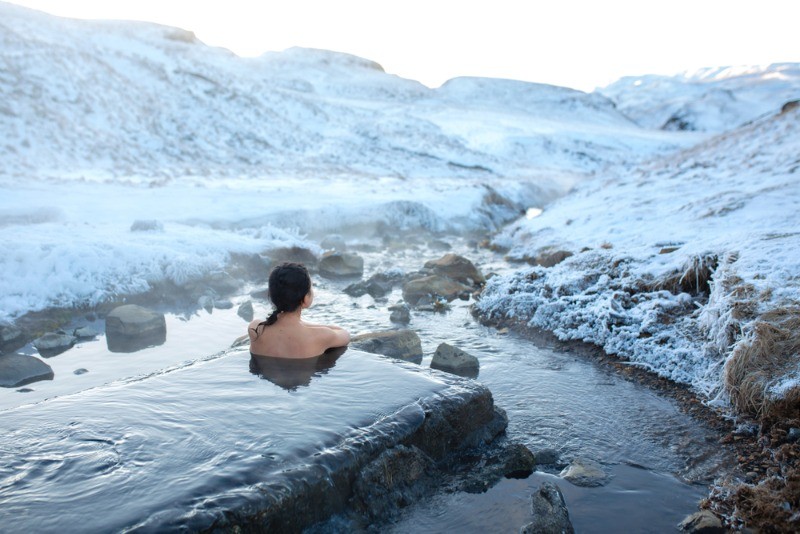Before about ten years ago, not everyone in the world knew that Iceland is a real country that one could actually visit. And if they did know it was real, they did not think it had much impact on global affairs. That all changed in 2011 when Iceland’s Grímsvötn volcano erupted and spread a huge ash cloud over north-western Europe. The ash cloud caused hundreds of flights to be delayed or canceled, and people around the world started wondering what Iceland is all about. The country’s reputation was further increased when the men’s football team reached the quarter-finals of the UEFA European football championship in 2016, and the Iceland fans’ ‘Viking Clap’ was noticed by football enthusiasts throughout the world. Even so, when asked to find Iceland, many people still have no idea where to point to on the map.
Where is Iceland?
Iceland is found in the north Atlantic Ocean, above the UK, and in line with the bottom of Greenland. It sits directly atop the Mid-Atlantic Ridge and was in fact formed by tectonic plate movement: as the North American plate and Eurasian plate moved apart, lava spilled into the gap from the Earth’s mantle and solidified to create the island.
Since the plates continue to move apart, Iceland is being split in two, at a rate of 2.5cm (1 inch) per year. As a result of its location, Iceland is very volcanically and geologically active; earthquakes and volcanic eruptions are common, and spread throughout the country are geysers and geothermal hot springs. Additionally, because of Iceland’s position in the ‘auroral zone,’ it frequently experiences northern lights displays.
Iceland is a fairly small island, with an area of only 103,000 sq. km (40,000 sq. miles, compared to the US’s area of 9.834 million sq. km, or 3.797 million sq. miles). The population is just over 350,000, making Iceland one of the most sparsely populated countries in the world.
The Physical Traits of Icelandic People
The first permanent settler of Iceland is said to be Ingólfr Arnarson, a Norwegian who came here around 874CE. It was he who named Reykjavík, or ‘Bay of Smokes’. After that, Scandinavians continued to settle in Iceland, many to escape the poor living conditions in their homelands. With them, they brought Irish and Gaelic people who were their servants or slaves, and so Icelandic genetics are a mixture of Nordic and Gaelic.

Because of low immigration, other than from Scandinavia, the Icelanders are mostly homogenous people. There is of course physical variation, but hardly any Icelanders have curly hair, other than the ones who can trace their ancestry back to Scotland or Ireland. Blonde-haired, blue-eyed tall people are very common here.
The Icelandic Language
The Icelandic language is exceptional in that it has barely changed in 1000 years. While other languages, like English, have been altered by mixing (up to 50% of modern English is derived from French) Icelandic has had very little foreign influence. In fact, when Iceland officially became independent from Denmark in 1944, a determined effort was made to cut all Danish words out of the language. Because Icelandic is still very similar to Old Norse, Icelanders are still able to read the Sagas, texts that date back over 700 years which depict historical events and genealogy.
Here are some other fun Icelandic culture facts. No matter what the time of year or the weather, most Icelanders love ice cream. There are so many ice cream shops in each town it is difficult to know which to choose. In my experience, Icelanders love leaving things until the last minute, which they justify with their favorite phrase- ‘Þetta reddast’ which means ‘it will all work out okay’.
Iceland Weather
Iceland is characterized by fairly cold winters and mild summers. With an average July temperature of 13°C in the south, Icelanders are not known for their tans or days spent lounging on the beach. Fortunately, the Icelanders have an antidote to the cold weather: an abundance of hot springs. Reykjavík alone has seven naturally heated public pools. The average temperature for the south in December is 0°C, and so snow is common here. The upside of this is that the easily accessible ski mountains can open once we’ve had a decent dumping of snow. Regarding the best time to visit, this depends on what attractions in Iceland you want to see.

Iceland tourism has grown significantly over the last decade, so much that two million tourists now visit the country every year. These visitors are fairly well spread out, with many coming throughout the winter in the hope of seeing the northern lights. However, in the high season—June to August— many more tourists visit to make the most of the almost 24 hours of sunlight and the slightly warmer and milder weather. In the winter, snowstorms, sand storms, and heavy winds are common, but these do not happen so much in the summer, so it’s a more pleasant environment in which to rent a car in Reykjavik and go explore the country. You will likely have heard of our most population attractions: the Golden Circle Route, a route taking you to several incredible places (Þingvellir National Park, Gullfoss waterfall, and Geysir geothermal area among others) and the Blue Lagoon geothermal spa.
Where is the Blue Lagoon in Iceland?
The Blue Lagoon, Iceland’s most famous geothermal spa, is only one of many. It’s conveniently located only 50km (31 miles) from Reykjavík, around a 45-minute car journey. The expanding company also runs its own coach shuttle service to take you there: Destination Blue Lagoon. What started as just an electric blue bathing pool formed by run-off water from a geothermal plant has expanded into a complex, which now includes on-site restaurants, a hotel, and its very own skincare range. Booking in advance is required, as this wonder is high in demand. But, as I mentioned before, it’s one of many geothermal spas, and there are dozens of other natural, unregulated hot springs spread throughout the country.
Samuel Hogarth, Reykjavik Cars.


 By
By


